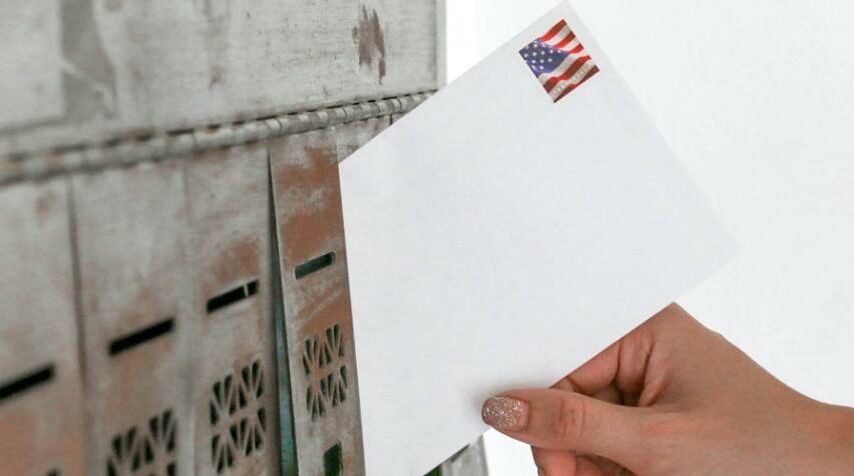Digital communication has become the prevailing method of interaction in the contemporary world. This includes various channels like text messaging, emails, and video calls. Nonetheless, there are instances when the need arises to dispatch tangible objects such as handwritten thank-you notes, checks, birthday cards, invitations, or letters through conventional postal services.
In such cases, ensuring the accurate delivery of the item to the intended recipient at the correct address becomes paramount. Therefore, knowing how to address an envelope is a valuable skill.
Steps to Learn How to Address an Envelope
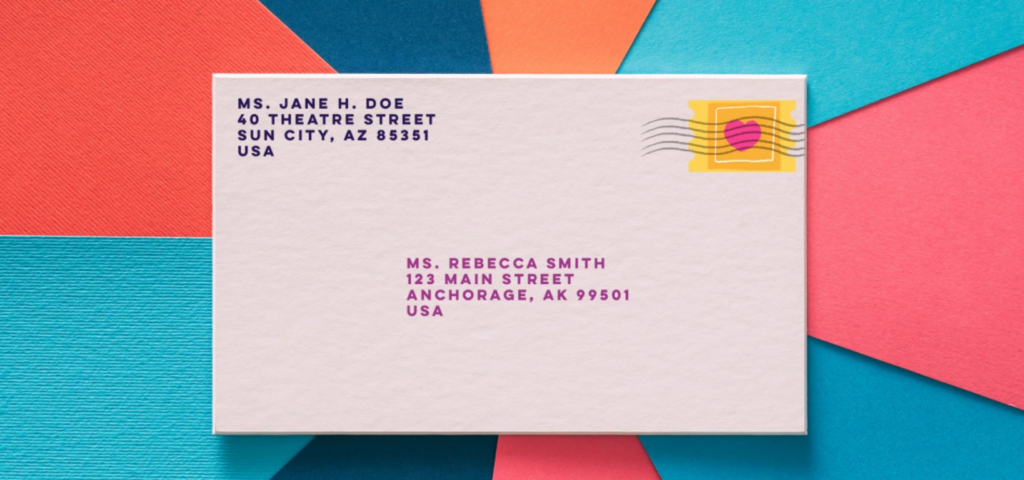
Image credit- today.com
Addressing an envelope involves a straightforward process. Placed in the upper-left corner of the envelope, the sender’s name and return residence address are placed, while the lower central expanse is earmarked for the addressee’s cognomen and postal coordinates. Typically, an adhesive emblem of postage finds its place affixed to the upper-rightmost juncture.
People commonly Penn these particulars on the same flat surface of the envelope. The sequence of these steps is not particularly significant; what matters is completing each of them accurately.
1. Incorporate the sender’s address onto the envelope
Commonly, the sender’s return address appears in the upper left corner of the envelope, either handwritten, typed, or affixed as a label. This could encompass your details or those of an individual you’re assisting in sending the mail. The following is the sequence for including the sender’s information, following each line:
Complete name
Name of the business or organization, if relevant
Street address or P.O. Box number, which should also incorporate apartment or condo details if necessary
City, state, and zip code
2. Incorporate the mailing address of the recipient
It’s also essential to include the recipient’s mailing address on the envelope. The structure is akin to the sender’s address, but the recipient’s details appear in the lower center of the envelope. The following is the sequence for incorporating the recipient’s information, in the specified order:
Full name, potentially accompanied by an honorific such as “Dr.” or “Mrs.” for formal correspondence. Additionally, you might include “Attn:” or “c/o” to guide the mail to a specific individual.
Name of the business or organization, if applicable.
Street address or P.O. Box number, including apartment or condo particulars when relevant.
City, state, and zip code.
3. Use a stamp
To ensure proper mail delivery, affixing a postage stamp to the envelope is usually necessary. If you’re curious about the cost of a postage stamp, it presently stands at 63 cents for a standard rectangular envelope, although this figure could fluctuate. In instances where the envelope carries extra weight, multiple stamps might be essential. The U.S. Postal Service offers resources on its website to aid in determining the appropriate postage amount.
Next Steps Following Addressing an Envelope
After addressing your envelope, you have several choices for sending it:
If you have a mailbox, you can leave it there and signal its readiness for sending by raising the flag.
Visit your nearby post office and hand it over to the staff.
Place it inside an authorized blue collection box.
Guidelines for Formatting a Military Address on an Envelope
A military address exhibits some divergence from a conventional one, yet the arrangement and positioning of the recipient address remain akin. You should follow the below sequence when including the recipient’s details:
Complete their name along with their rank.
Postal Service Center (PSC) identifier, unit numeral, or ship name.
Designation of Army and Air Force Post Office (APO).
Utilize a two-letter abbreviation: “AA” for the Armed Forces of the Americas, “AE” for Armed Forces of Europe, or “AP” for Armed Forces of the Pacific.
Attach the nine-digit ZIP code.
Addressing an Envelope for International Mail
The method and arrangement for sending an envelope internationally follow a similar pattern. However, you will introduce the sender’s and recipient’s countries on distinct last lines for each.
Positioned within the uppermost left quadrant, one shall find the sender’s name and residence address, conforming to tradition. Meanwhile, nestled beneath the line of demarcation housing details of city, state, and postal code, one shall encounter the sender’s nation. For the recipient, the name and residence shall maintain their stance in the lower center of the envelope. Adding to this, the final row shall graciously accommodate the recipient’s country.
The Postal Service mandates that the recipient’s address must be inscribed in English. If the address is composed in another language, an English translation should be provided after each line.
Writing Addresses on Envelopes for Different Intentions
Formatting an Address for an Apartment
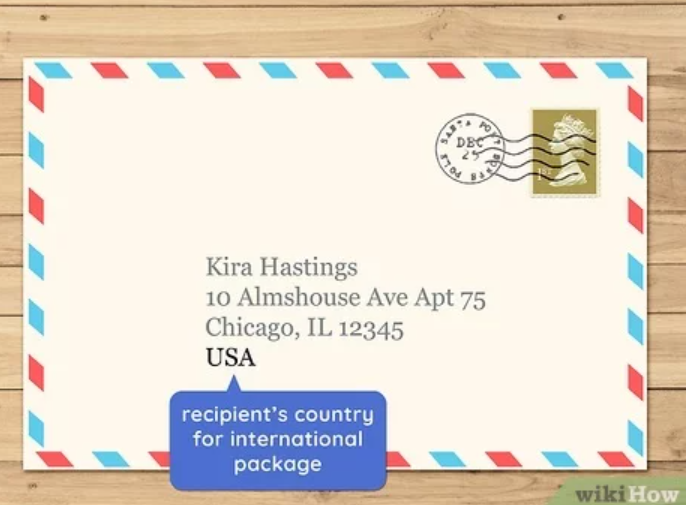
Image Credit- wikihow
When sending mail to an apartment, ensuring the inclusion of the apartment number alongside the complete street address becomes crucial. The Postal Service suggests placing the apartment number after the street address line. As an illustration, an address could read as follows: 100 Main St., Apt. 2.
However, if the entirety of the information cannot be accommodated on the address line positioned above the city, state, and zip code, the Postal Service recommends placing the apartment number on a line just before the street address.
Writing a P.O. Box address
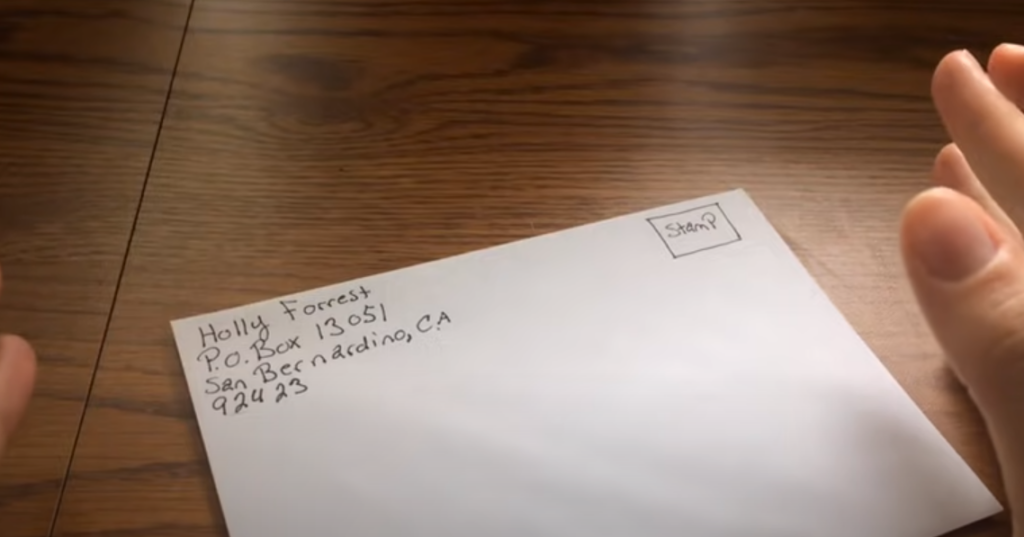
When sending mail to a P.O. Box, add “P.O. Box” along with the correct box number in the address line. The recipient’s name and address still retain their location in the lower center of the envelope. However, the address will now incorporate a P.O. Box number instead of a street address.
Addressing an envelope to a couple
When addressing an envelope to a couple, the arrangement of the recipient’s address remains unchanged. However, the envelope will be directed to two individuals. How the couple’s names are written or printed can vary based on their relationship status and the level of formality associated with the contents of the envelope.
For casual addresses, the names of the couple might suffice. In more formal instances, including their respective titles before their names is advisable. Moreover, if, for instance, one individual holds a doctorate or a military title, their name would generally come before that of their partner.
Addressing an envelope to a family
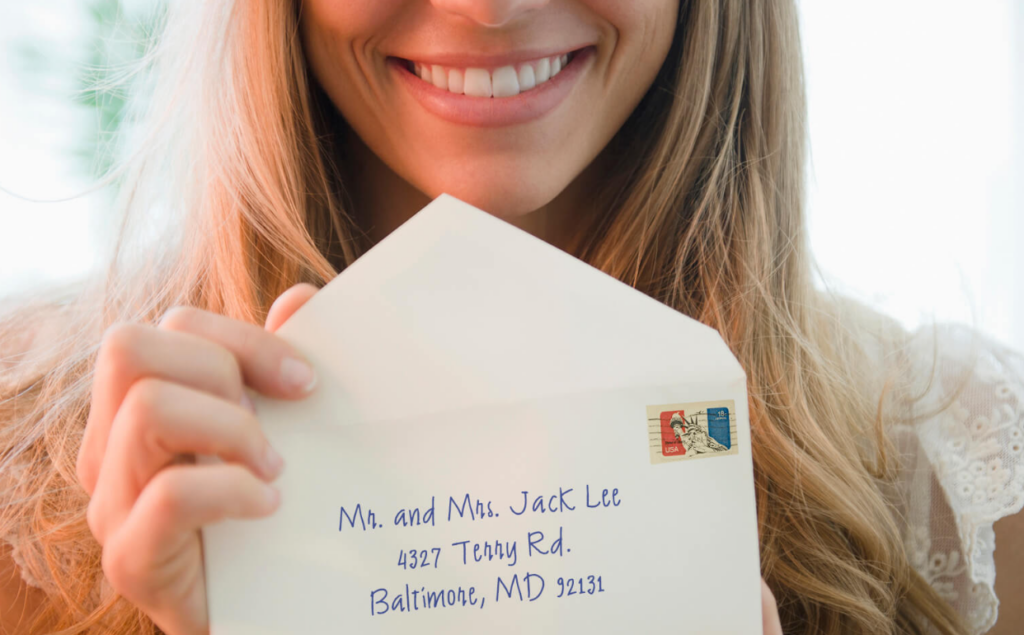
Image Credit- lovetoknow.com
When addressing an envelope to a family, the approach is reminiscent of addressing a couple’s envelope. The positioning of the recipient address on the envelope remains unchanged, yet the opening line encompasses multiple individuals.
The envelope can be addressed using the family name, such as “The Smith Family,” or you might include the parents’ names with the addition of “and Family.” It’s important to note that if you’re sending an invitation, providing clarity on which family members are invited can be quite helpful.
Addressing to a postcard
A postcard deviates in appearance from an envelope. It usually omits the inclusion of a sender’s name and address. Instead, you have the freedom to craft a personal message and affix your signature. Nevertheless, the recipient’s name and address, along with the necessary postage, remain of utmost importance.
In the instance of a postcard, one will frequently come across multiple lines allocated for the recipient’s name and address on the right-hand side. Moreover, there exists a specified rectangle positioned at the upper right corner of the postcard meant for the placement of the postage.
Extra Tips
In addition to understanding the method and location for addressing an envelope, there are a few supplementary pointers that can enhance the likelihood of your envelope reaching the intended recipient accurately.
The Postal Service suggests the following:
Writing or typing addresses using capital letters.
Using a pen or permanent marker for the writing.
If feasible, incorporate the nine-digit zip code.
Conclusion: How to Fill Out an Envelope
Whether you’re dispatching a heartfelt letter, submitting a bill, or extending an invitation to a birthday celebration, having the skill to accurately write on an envelope is prudent to ensure its successful delivery. In situations where the envelope contains a check, acquainting yourself with the process of writing a check before sealing the envelope is advisable.
Furthermore, if you intend to mail cards featuring your updated home address, it’s recommended to verify that you’ve diligently followed the necessary steps for effecting an address change.
FAQ: How to Fill Out an Envelope
Q1: How should I write on an envelope if it’s international?
For international mail, follow the same address placement as a domestic envelope. Include the sender’s and recipient’s countries on a separate last line for each. The sender’s country is placed below the city, state, and zip code. The recipient’s country is added on the last line after their address.
Q2: What’s the protocol for addressing envelopes to couples or families?
When addressing a couple, maintain the usual recipient address positioning but include both names. For a family, the recipient address remains the same, but you can address it to the family name or include the parents’ names followed by “and Family.”
Q3: Are there any tips for ensuring accurate delivery?
Yes, you should use a pen or permanent marker for writing. Including the nine-digit zip code, if possible, can also enhance accurate delivery.
Q4: Is it necessary to include a sender’s name and address on a postcard?
No, postcards typically omit the sender’s name and address. Instead, you can craft a message and sign it. However, including the recipient’s name and address, as well as the appropriate postage, remains essential.

